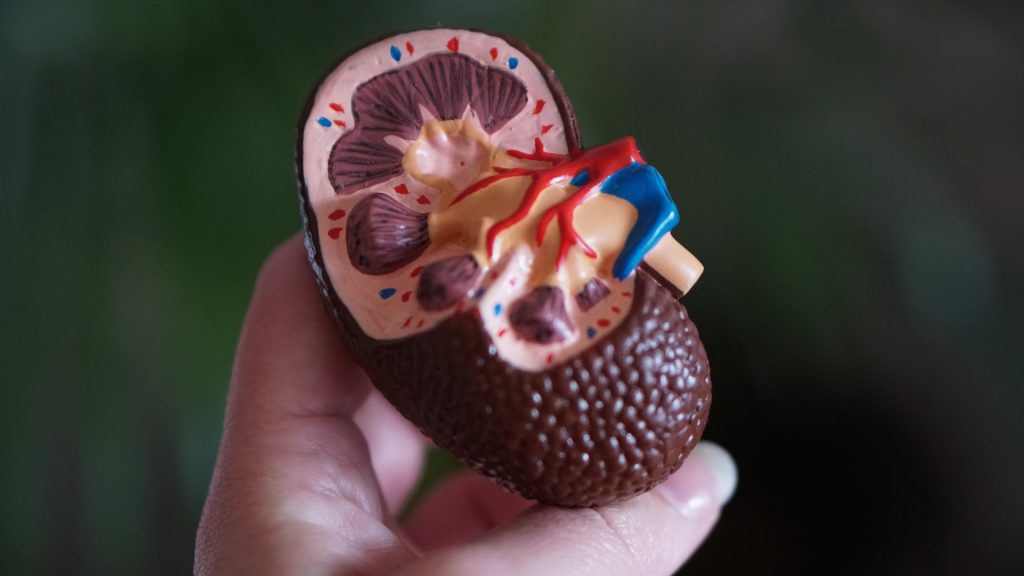
Urine levels of adenine, a metabolite produced in the kidney, are predictive and a causative biomarker of looming progressive kidney failure in patients with diabetes, a finding that could lead to earlier diagnosis and intervention, researchers reported in the Journal of Clinical Investigation. Elevated adenine was also associated with all-cause mortality.
The study results are significant because until now, the most important marker for kidney disease has been protein (or albumin) in the urine. Up to half of diabetes patients who develop kidney failure never have much protein in their urine. As 90% of patients with diabetes remain at increased risk despite low levels of albumin in their urine, this study has widespread consequences. It is the first study to identify these patients at an early stage by measuring this new causative marker in the urine.
The finding paves the way for clinic testing to determine that a patient is at risk, five to 10 years before kidney failure, said the senior study author, Kumar Sharma, MD. The study was conducted by The University of Texas Health Science Center at San Antonio.
Importantly, the research team identified a small molecule that blocks the major pathway of endogenous adenine production in the body. This therapeutic drug reduced kidney adenine levels in mice with type 2 diabetes. “The drug protected against all the major aspects of diabetic kidney disease without affecting blood sugar,” Sharma said. “The study is remarkable as it could pave the way to precision medicine for diabetic kidney disease at an early stage of the disease.”
Findings consistent across diverse study populations
The researchers studied more than 1200 patients with diabetes across three international research cohorts. The Chronic Renal Insufficiency Cohort (CRIC) study included African American, Hispanic and Caucasian participants in the US. A separate study was in the American Indian population. The team also evaluated an Asian cohort of mostly Chinese, Asian Indians and Malay populations in a study based in Singapore.
Mapping the metabolites
UT Health San Antonio is one of few centres perfecting a technique called spatial metabolomics on kidney biopsies from human patients. This technique enables researchers to determine the locations of adenine and other small molecules in kidney tissues.
“It’s a very difficult technique, and it took us several years to develop a method where we combine high resolution of the geography of the kidney with mass spectrometry analysis to look at the metabolites,” Sharma said.
Metabolites are small molecules that the body produces based on metabolism. They make cells go in a healthy way or in a disease pattern, Sharma said.
Adenine situated around kidney blood vessels
The team found endogenous adenine around scarred blood vessels in the kidney and around tubular-shaped kidney cells that were being destroyed. Endogenous substances are those that naturally occur in the body.
The finding that high levels of adenine were also associated with all-cause mortality in the study participants suggests that the metabolite is affecting other parts of the body, as well, Sharma said.
False sense of security
Many patients with diabetes know they’re at risk of kidney disease, but if they don’t have protein in their urine, they think they are protected, he said.
“They could be feeling a false sense of security that there is no kidney disease occurring in their body,” Sharma said. “But in fact, in many cases it is progressing, and they often don’t find out until the kidney disease is pretty far advanced. And at that time, it is much harder to protect the kidneys and prevent dialysis.”
“The death rate is very high, especially in patients with diabetes,” Sharma said. “There is about 40% mortality within five years in patients with diabetes and kidney failure.”
New type of therapy is needed
Although treatments to protect against diabetes and blood pressure are improving, they only push the envelope a little bit, Sharma said, in that patients still have progressive kidney disease and kidney failure, but they are afforded more time before they reach that endpoint. The measurement of urine adenine is difficult; however, the team at the Center for Precision Medicine at UT Health San Antonio has developed a robust and sensitive method to measure urine adenine in patients.
“What we’re hoping is that by identifying patients early in their course and with new therapies targeting adenine and kidney scarring, we can block kidney disease or extend the life of the kidney much longer,” Sharma said.
Source: University of Texas Health Science Center at San Antonio

